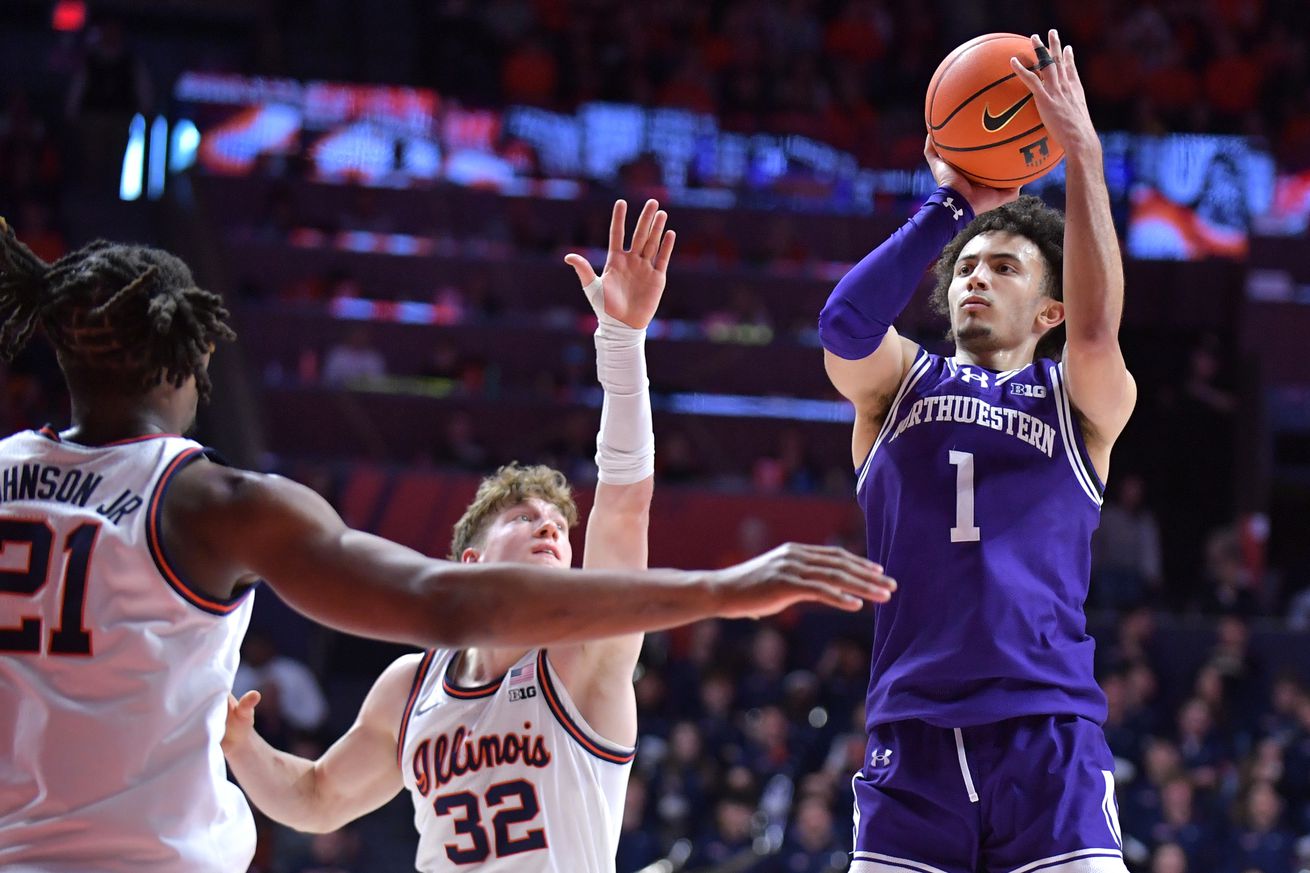
At times, Leach stepped up tremendously before his season-ending ACL injury.
As we move forward with more men’s basketball player reviews, it’s now time to analyze the season of Jalen Leach. Transferring to the team from Fairfield, Leach was productive in his lone season as a Wildcat.
The Good
There was a lot to like about Leach’s season, especially as Northwestern moved further into conference play. In his final six games before an ACL injury in the February 4 game against USC, Leach shot 51% from the field and 50% from three, averaging 17.2 points, 5.5 assists and 2.2 rebounds per game.
Overall, the New York native averaged 14.3 points, 3.4 assists and 2.2 rebounds per game on the season, but his impact on the floor went beyond those numbers. As the season progressed, so too did Leach’s comfort on a Big Ten floor. He was often thrust into the role of bringing the ball up the floor, having increased success doing so as the season went on. For the ‘Cats, a team in desperate need of a point guard, Leach was often tasked with being the floor general. Although there were some initial struggles, he demonstrated rapid improvement in January and early February.
Given his heavy load of minutes (30+ in seven of his last eight games), Leach also did a great job at taking care of the basketball in general. He committed 40 turnovers in 2024-25 as a whole, but gave the ball away just 12 times in his final nine games, eclipsing two turnovers in just one game during that stretch (an overtime loss to Michigan). After five-turnover games against DePaul and Penn State around the time of the New Year, Leach undoubtedly knew he’d need to step up in that department, and he responded with more control and composure throughout the rest of the season.
The Bad
Despite the positives, Wildcat fans could only expect so much from Leach, who only logged one highly productive season at Fairfield during his four years there. At the start of the season, Leach had trouble finding his footing, putting up duds in each of NU’s non-conference losses (to Dayton, Butler and Iowa respectively).
In those games, Leach shot a combined 7-of-26 from the field, recording just three assists and knocking down only three of 13 threes. Although Leach ended up being a driving force in later Big Ten games, his impact didn’t stand out against good teams early in the year, causing legitimate concern among fans that Leach might not deliver to the extent they’d hoped.
In addition, Leach’s ability to get steals was hardly a factor in the latter half of the season. After recording three steals against Penn State on January 2, Leach had just four in his last nine games, an extremely low total for a starting guard who averaged 33.1 minutes per game during that span. Perhaps it was the additional burden of taking on a bigger role in the offense that weighed Leach down defensively. Nonetheless, it was surprising to see such a drop in defensive production during that stretch, especially considering he had 10 steals in the three games prior and averaged 1.8 steals per game a season before at Fairfield.
The Bottom Line
Ultimately, the criticisms listed above are quibbles from what was an extremely solid season from Leach. In a time when Northwestern men’s basketball needed star power, Leach stepped up in a huge way, and if he’d stayed healthy throughout the season, the ‘Cats would’ve absolutely had a better chance at making a run in the Big Ten Tournament.
Unfortunately for Leach and his fans, the devastating ACL injury he suffered against USC was the last chapter in a short one-year run as a Wildcat. Nonetheless, despite spending just one-fifth of his college tenure at Northwestern, the Fairfield transfer will be remembered as one of the more impactful NU guards of the past decade. Leach was an electric player to watch in January and early February, and although his season surely didn’t end the way he would’ve wanted, his play and charisma left a lasting impact on the team and its culture.